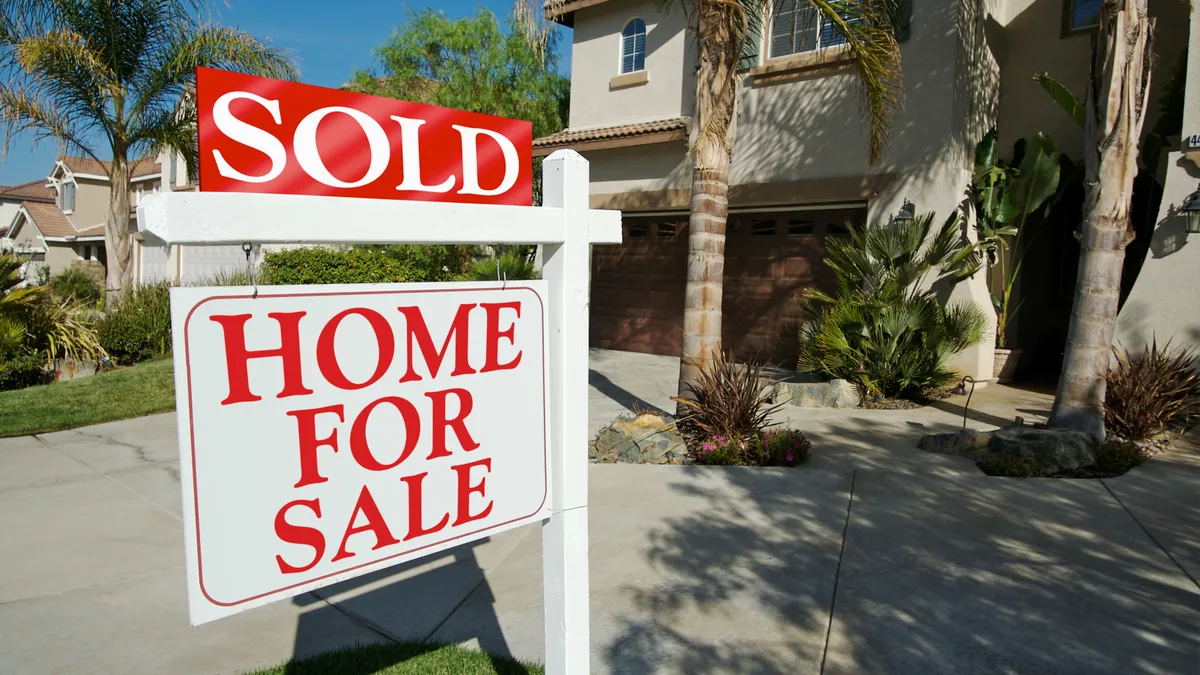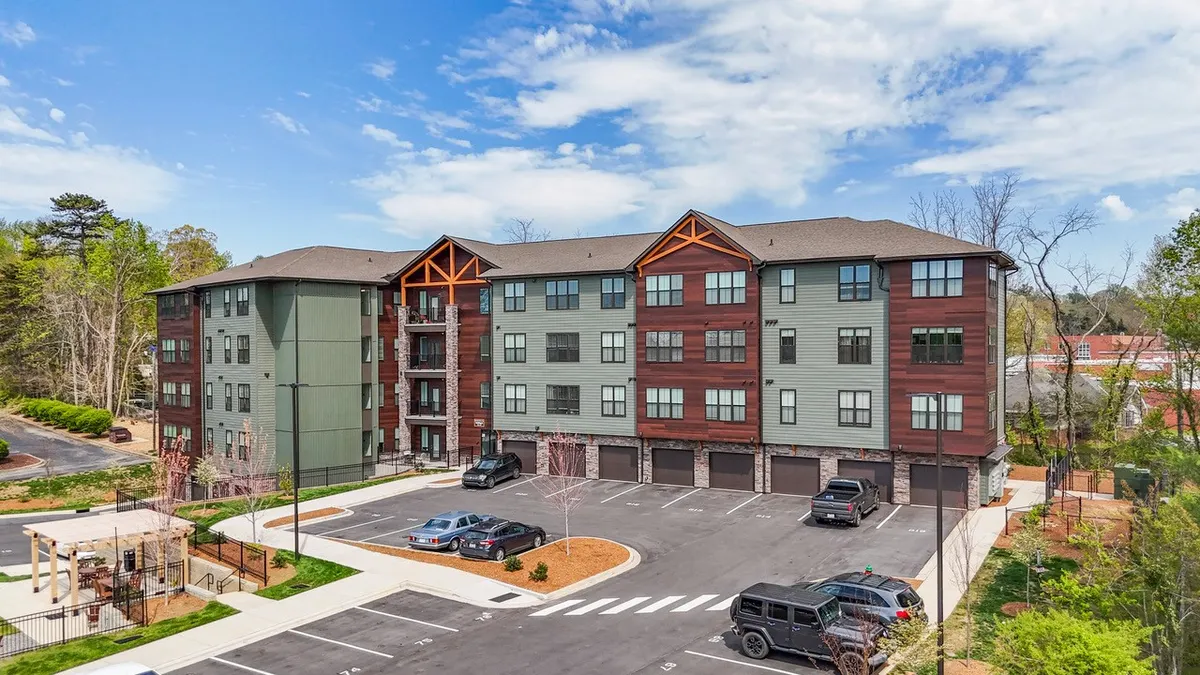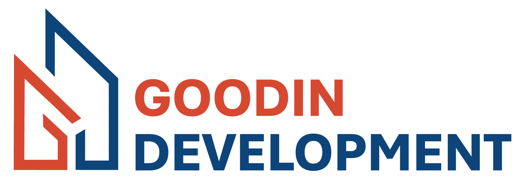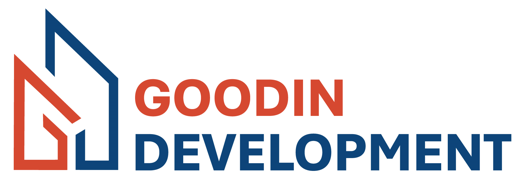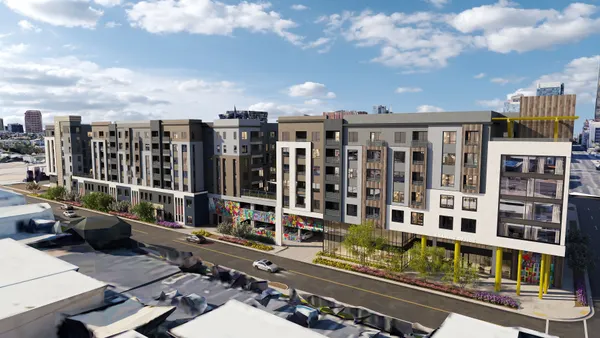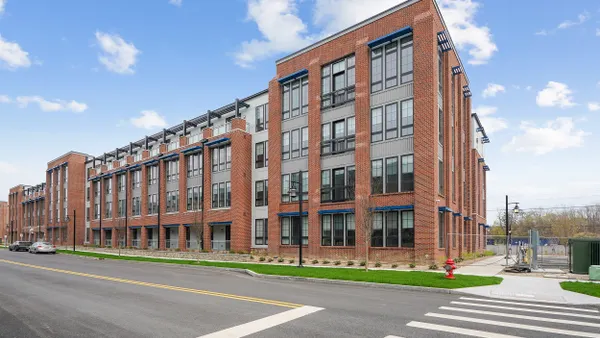Dive Brief:
- In what could be a positive sign for multifamily owners and operators, 2024 could see the fewest existing home sales since the early 1990s, according to global investment banking firm Goldman Sachs.
- Due to higher mortgage rates that are “likely to remain elevated for the foreseeable future,” the report’s authors predicted 3.8 million existing home sales next year, a 25% drop from 2022, in an Oct. 22 research note shared with Multifamily Dive. Goldman Sachs forecasts this year’s sales of existing homes to be 4.1 million, and 2022’s were 5.1 million.
- It noted that nearly all of the country’s mortgage borrowers have interest rates below current market rates. Almost 90% have rates 2 percentage points below market, and more than 60% have rates 4 percentage points lower, strongly disincentivizing them from moving.
Dive Insight:
With fewer existing homes available to purchase, renters' options for moving will remain limited. In the new home market, higher mortgage rates mean they'll also need to save more for a down payment. Thus, net-net, the number of people who will continue to rent — whether by choice or necessity — should remain high, keeping multifamily rent rolls flush.
Up to now, limited available housing supply has kept homebuilding resilient, despite higher interest rates, with housing starts 5% above 2019 levels in September. Nevertheless, Goldman Sachs analysts expect housing starts to decline by 4% to 1.34 million next year, reflecting sharply fewer multifamily starts.
The backlog of multifamily units already under construction has grown 56% since 2020, and the pipeline for new projects has already begun to narrow, the report said.
“Continued oncoming multifamily supply should allow rent inflation to normalize further even as starts slow,” the report’s authors said.
Goldman strategists expect mortgage rates to remain elevated for the foreseeable future, dipping to just under 7% by the end of next year.
This has created a significant financial cost for a substantial share of households that otherwise might consider moving, as buying a new home would require them to prepay their current mortgage and take out a new mortgage at a significantly higher rate.
“We expect this ‘lock-in’ effect to push existing home sales even lower in the coming months and to limit any rebound next year,” the authors said.
Oversupply concerns
In addition, while a substantial portion of the backlog of single-family homes under construction has already been cleared, the backlog of multifamily units already under construction has continued to grow (up 56% since 2020) and now totals almost 2.5% of the existing renter-occupied housing stock, leading to oversupply concerns in some markets.
The authors said they expect multifamily developers to focus on clearing that large backlog before breaking new ground. And indeed, the pipeline for new projects has continued to narrow amid recession concerns and poor absorption rates, with multifamily permits down 15% versus the first half of the year average.
When developers do want to start new projects, lack of financing options and increased costs are a hurdle. Banking failures, including those at Silicon Valley Bank and Signature Bank, accelerated the slowdown.
“Those failures set up a situation in which pretty much all of the money center and regional banks really pulled back construction lending significantly,” said CoStar’s National Director of Multifamily Analytics Jay Lybik.
Nevertheless, the Goldman analysts said they are not worried that fewer multifamily housing starts could slow the normalization in rent inflation.
“Even though multifamily starts are likely to decline, completions are likely to continue running near their multi-decade high pace, which should help clear the construction backlog and contribute to a modest increase in the rental vacancy rate,” the report’s authors wrote.
Les Shaver contributed to this report.


